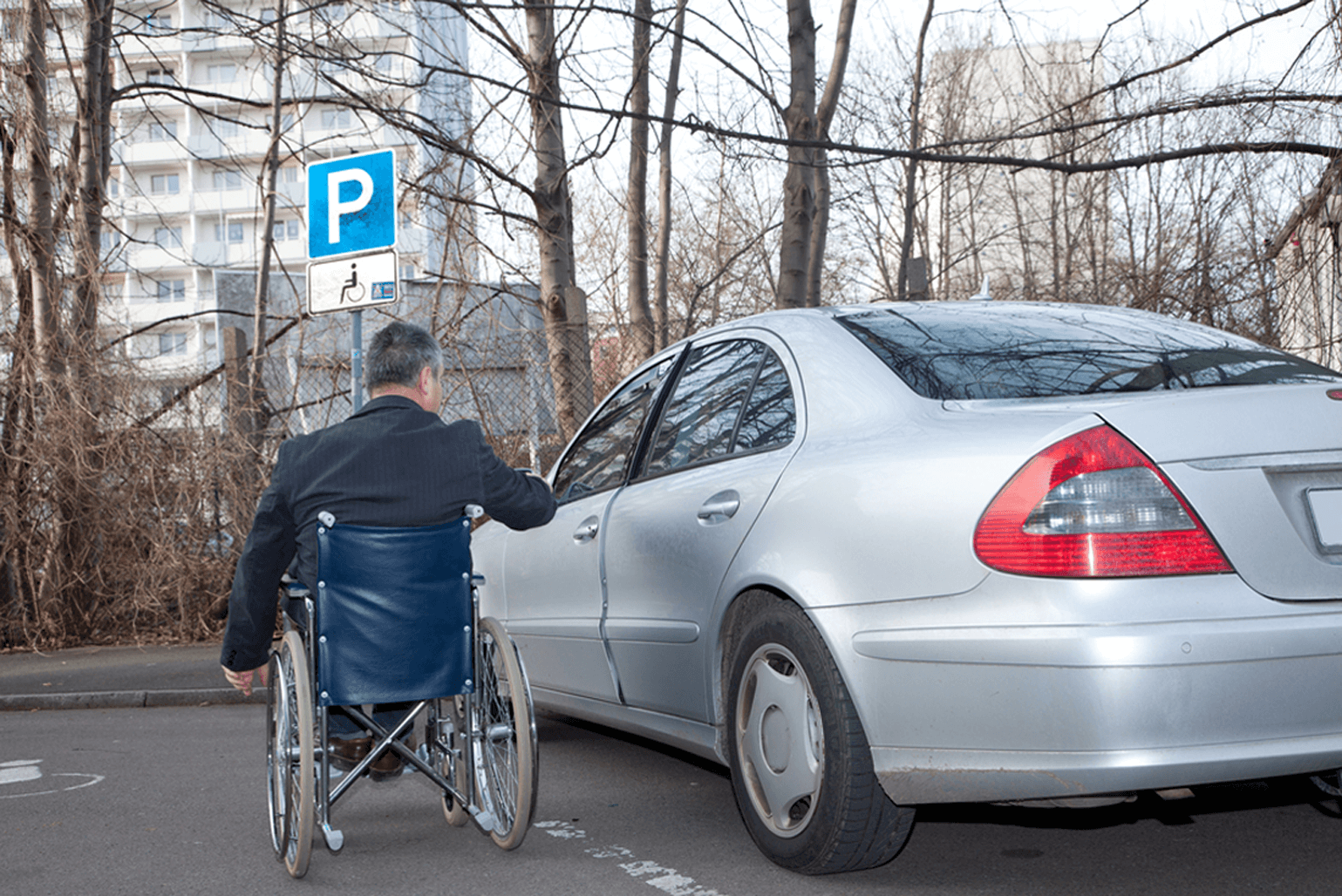Drivers with Disabilities
Physical Impairments
Today, there are more than four million Canadians living with some form of a disability, and the numbers are growing. Technological advances have removed some of the barriers that have prevented so many people with disabilities from fully participating in the driving experience. For people who have a disability – whether it’s visible or invisible – advances in technology have enhanced the ability and freedom for mobility.
Many individuals who have physical disabilities own and operate vehicles. Occupational therapists with advanced training can assess a person’s needs and make appropriate recommendations for equipment which would allow them to drive. For example, a driver with leg weakness may be able to drive using a left foot gas pedal or hand controls. A therapist can assist a client to select the right car, van or truck and the driving equipment that will best meet their needs now and in the future.

Examples of possible equipment include:
- Hand controls - If a driver cannot use foot pedals at all, different types of hand controls can be fitted on an automatic car.
- Mirrors - A panoramic rear view mirror can be helpful to cover blind spots if an individual has limited neck movement. Stick-on ‘blind spot’ mirrors extend what can be seen in door mirrors
- Seats or platforms that move in and out of the vehicle can help a person get into the driver’s seat
- Effort required to use the steering wheel or brake can be altered if a driver is limited in their ability to use these controls
- When equipment is recommended and the client has completed in-vehicle training, the occupational therapist will then provide a prescription for the driver. The prescription is taken to a vehicle modifier for equipment installation in the driver’s personal vehicle.

Note: It is recommended that drivers have equipment installed and maintained by a NMEDA dealer. The National Mobility Equipment Dealers Association (NMEDA) is a not for profit trade association dedicated to expanding opportunities for people with disabilities to safely drive or be transported in vehicles modified with mobility equipment to fit their specific needs. All members work together to improve transportation options for people with disabilities.
Cognitive Impairments
Drivers may sustain an injury or illness that results in cognitive changes. The changes may impact the driver’s reaction time, ability to process the environmental stimuli or the ability to make the right judgements when driving. By performing clinical and on-road assessments, an occupational therapist can determine the impact of the cognitive change on driving and make recommendations about the potential to drive, including reintegration programs if appropriate.
If an individual with a disability wants to start driving, an assessment with the Driver Assessment and Training team can help make informed decisions about equipment and training given a driver’s medical status.
Drivers With Visual Field Loss – MTO
Good eyesight is essential for safe driving. Even a small loss of vision can affect an individual’s ability to read road signs and markings or detect hazards such as pedestrians, other vehicles or objects on the road.
Visual field is the area of vision a person has without moving their eyes (e.g. when looking down the road when driving they can see signs, people, the road, the sky without directly looking at those items). Conditions such as macular degeneration, glaucoma, stroke, and brain injury can result in blind spots or blind areas in the visual field. The MTO has specific requirements about how much visual field a driver must have in order to obtain a licence. Drivers who do not meet the Ministry of Transportation standards for visual field and wish to drive must apply to the Ministry for a vision waiver. This process requires the completion of an application including medical and vision reports. The final process of the application is a functional driving assessment. This in-clinic and on-road test is specific to address the level of vision loss and the driver’s ability to compensate for it on the road.
SE Health Driver Assessment and Training is approved by the Ministry to conduct these assessments